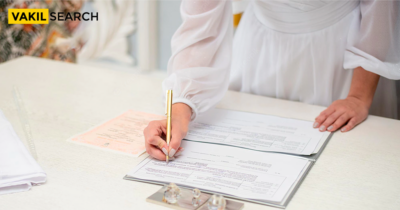Craft a winning legal heir self-declaration. Understand purpose, requirements, crafting steps, & local variations. Unravel the legalities & claim your rightful share!
Overview
Navigating the legalities of inheritance requires meticulous documentation. One crucial document in this process is the legal heir certificate, which verifies your rightful claim to the deceased’s assets. While obtaining this certificate often involves official procedures, in some cases, a self-declaration can suffice. So, how do you write a self-declaration for a legal heir certificate? Fear not, for this comprehensive guide illuminates the path with clarity and precision.
Understanding the Purpose and Requirements
Before embarking on the drafting journey, it’s vital to understand the purpose and requirements of a self-declaration for a legal heir certificate.
Purpose: This document serves as a sworn statement, officially declaring your legal heirship to the deceased individual’s property. It can be used for various purposes, including bank withdrawals, property transfer, and claims on insurance policies.
Requirements: To be valid, your self-declaration must adhere to specific legal guidelines. These vary depending on your jurisdiction, so researching local regulations is paramount. Typically, your declaration must include the following:
- Details of the deceased: Full name, date of death, place of death.
- Your details: Full name, relationship to the deceased (e.g., son, daughter, wife), address, contact information.
- Declaration of heirship: Clearly stating your claim as the legal heir, mentioning any applicable inheritance laws.
- Evidence of heirship: Providing documents supporting your claim, such as birth certificate, marriage certificate, adoption papers, etc.
- Verification and signature: Declaring the truthfulness of your statement, signing and dating the document in the presence of witnesses or a notary public.
Crafting the Declaration: A Step-by-Step Guide
With the basics clear, let’s look into the practical steps of writing your self-declaration:
Introduction
Begin by stating your purpose for drafting the declaration. Mention the name of the deceased individual and your relationship to them.
Body
- Heirship declaration: Clearly state your claim as the legal heir to the deceased’s property. Mention any relevant inheritance laws or legal documents supporting your claim.
- List of legal heirs: If there are other legal heirs, list their full names and relationships to the deceased. Specify the share of inheritance each heir is entitled to, if applicable.
- Exclusion of other claimants: If any potential claimants exist, state their names and provide reason for their exclusion from the legal heirship.
Evidence of Heirship
Attach copies of documents supporting your claim, such as:
- Birth certificate: Proving your relationship to the deceased.
- Marriage certificate: Establishing your spouse’s right to inheritance.
- Adoption papers: Demonstrating legal parent-child relationship.
- Will or testament: If a will exists, it establishes the distribution of assets as specified by the deceased.
Conclusion
- Verification: Affirm under oath that the information provided in the declaration is true and accurate.
- Signature and date: Sign and date the document in the presence of witnesses or a notary public.
Witness Statements
Two witnesses, unrelated to the deceased or any beneficiaries, must sign and date the document, confirming they witnessed your signature and oath.
Additional Considerations
- Language: Use clear and concise language free from legal jargon. If unsure about legal terminology, consult an attorney.
- Format: While formal formatting is preferable, consult local requirements for specific presentation details.
- Notary Public: Consider notarising your declaration for added legal weight and validity.
- Navigating the Maze: Local Variations and Legal Assistance
Remember, regulations and requirements for self-declarations can vary significantly based on your location. Always research your local laws and legal precedents to ensure your document adheres to the necessary formalities. Consulting with a lawyer familiar with inheritance law in your jurisdiction can provide invaluable guidance and ensure your self-declaration is accurate and effective.
Beyond the Paper: The Power of Clarity and Accuracy
Writing a self-declaration for a legal heir certificate may seem daunting, but it’s ultimately about clarity and accuracy. By diligently following the guidelines, providing supporting evidence, and seeking legal guidance when needed, you can navigate this process with confidence and secure your rightful claim as a legal heir. So, breathe deeply, gather your documents, and embark on this journey with the knowledge and understanding gleaned from this guide. Remember, proper documentation can pave the way for a smooth and successful inheritance process.
FAQs
Can I write a self-declaration if there are other legal heirs?
Yes, you can still write a self-declaration even if there are other legal heirs. Within the document, explicitly list all legal heirs, including yourself, along with their relationships to the deceased and (if applicable) the share of inheritance each one is entitled to. This demonstrates transparency and avoids potential disputes later.
What kind of evidence of heirship should I include?
The specific documents supporting your claim will depend on your relationship to the deceased. Common supporting documents include: Birth certificate: Proving your parentage or adoption. Marriage certificate: Establishing your spouse's right to inheritance. Adoption papers: Demonstrating legal parent-child relationship. Divorce decree: If relevant, showing the dissolution of a previous marriage that might affect inheritance rights. Will or testament: If a will exists, it serves as the primary document outlining the distribution of assets.
Do I need a lawyer to write the self-declaration?
While consulting a lawyer for guidance is always advisable, writing the self-declaration yourself is possible, especially if the situation is straightforward. However, if there are complex family dynamics, disputed claims, or specific legal nuances in your region, seeking professional advice from an attorney specialising in inheritance laws is highly recommended.
Where can I get my self-declaration notarised?
Notarisation adds an extra layer of legal weight to your document. You can typically get your declaration notarised at banks, credit unions, post offices, or the office of a notary public. Make sure the notary is authorised to practice in your jurisdiction.
What do I do after writing the self-declaration?
The next steps depend on your local regulations and the purpose of your declaration. In some cases, you may need to submit it directly to the relevant authorities, such as a government office or bank handling the deceased's estate. In other situations, the declaration might be used as supporting evidence for obtaining other documents, like bank account access or property transfer requests. Research your specific requirements and follow the designated procedures for proper submission.










